Our Highway & Bridge team replaced Wire Mill Bridge, which carries Lehigh Street over Little Lehigh Creek in the heart of Allentown, Pennsylvania. The original bridge, built in 1940, was a two-span steel I-beam bridge with an open grate deck. It had a span of 116 feet with a curb-to-curb width of 42 feet and sidewalks on both sides.
Given the location of the bridge, PennDOT elected to use precast substructure components to expedite construction, including the footings, abutment walls, and pier stem and cap. The idea was to demolish the existing bridge and have the new bridge operable in a single construction season, which would minimize the number of days the road would be detoured. While PennDOT knew the proposed schedule relied on significant utility work, they didn’t know that the telecommunications company had a delay. A BIG delay… 412 calendar days to be exact.

Slowing Our Roll
Hundreds of telephone and data lines that ran beneath the existing bridge had to be relocated. The original plan was for the telecommunications company to relocate their lines to a temporary truss bridge, which they would order and install. By the time the they could fit this work into their schedule, they weren’t able to get their truss bridge and had nowhere to hang their lines. To prevent further delay, our team worked with PennDOT and their engineers to ensure our temporary pedestrian bridge could handle the added weight of the lines. By the time the telecommunications company completed their relocation, our mobilization was 14 months later than originally anticipated – too far into PennDOT’s construction season to complete the bridge work within the original 185-day road detour. In addition, we also had to contend with stocked trout and wild trout seasons, which prohibits us from doing any work in the creek from March through mid-June and October through December.
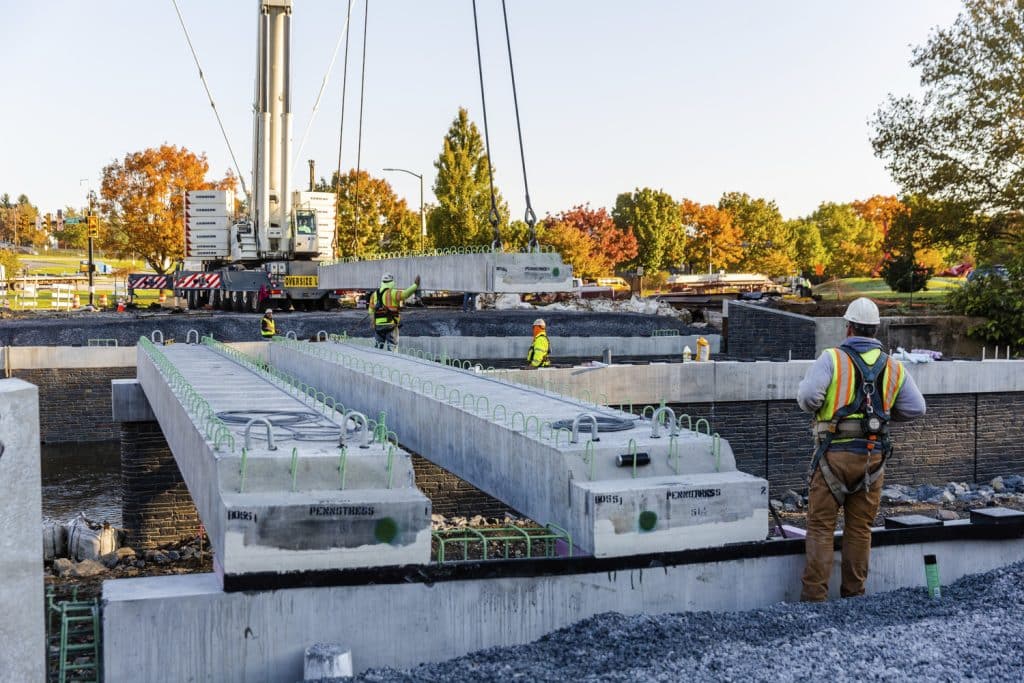
In addition to telecommunication lines issues, we also had to contend with other utility relocations, including city-owned water and sanitary sewer lines, both of which ran beneath the bridge. These utilities were installed so long ago that the original drawings didn’t accurately depict the current conditions. For example, after excavating the storm sewer, which was supposed to be a concrete pipe, we found a brick culvert in the wrong location. With the new sewer main connection running through pre-cut openings in all three pieces of the precast substructure – the pier and both abutments – we had to reconfigure the types of pipe fittings. Fortunately, all the project team members put their heads together and figured out a solution, but it was one more snag we really didn’t need.
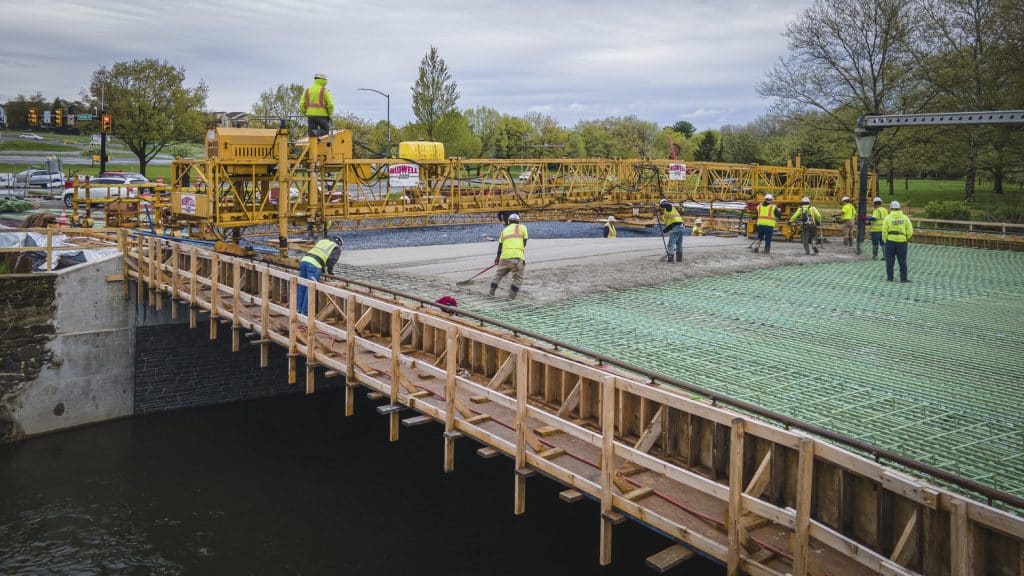
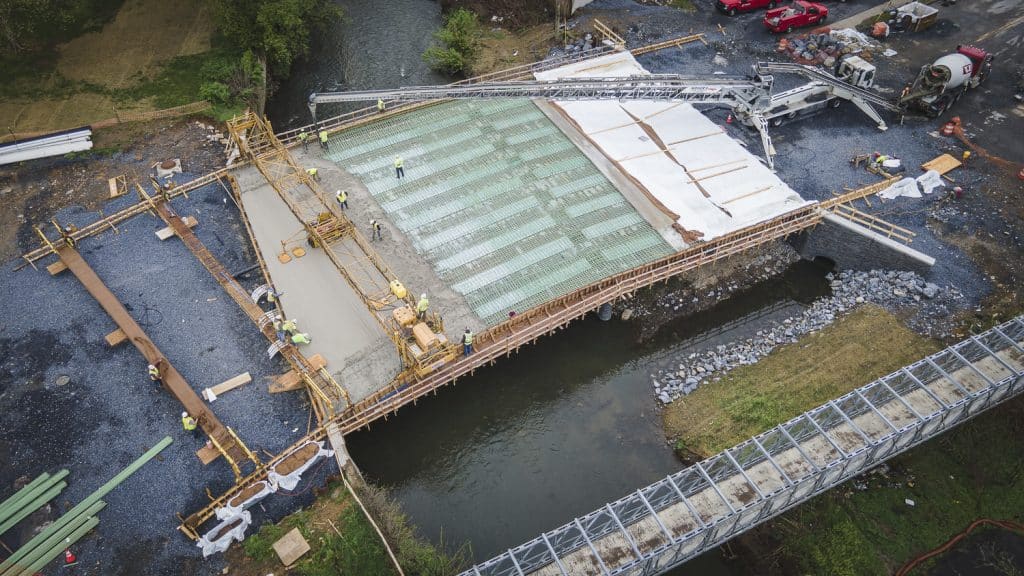
Precast Substructure – A New Experience
While our projects frequently include precast bridge beams, this was our first time constructing a bridge with precast substructure components, which was an interesting process, to say the least. The precast pieces included a pier and abutments with architectural surface treatments designed to match the surrounding historic Allentown neighborhood, as well as footings, which had to be perfectly level. To ensure this, they were placed on shims and grout was injected into predrilled ports to fill in the gaps surrounding the shims, providing a solid structural support. We then set the “walls” (the pier and abutments) and grout was placed in precast keyways between the panels to lock them in place.
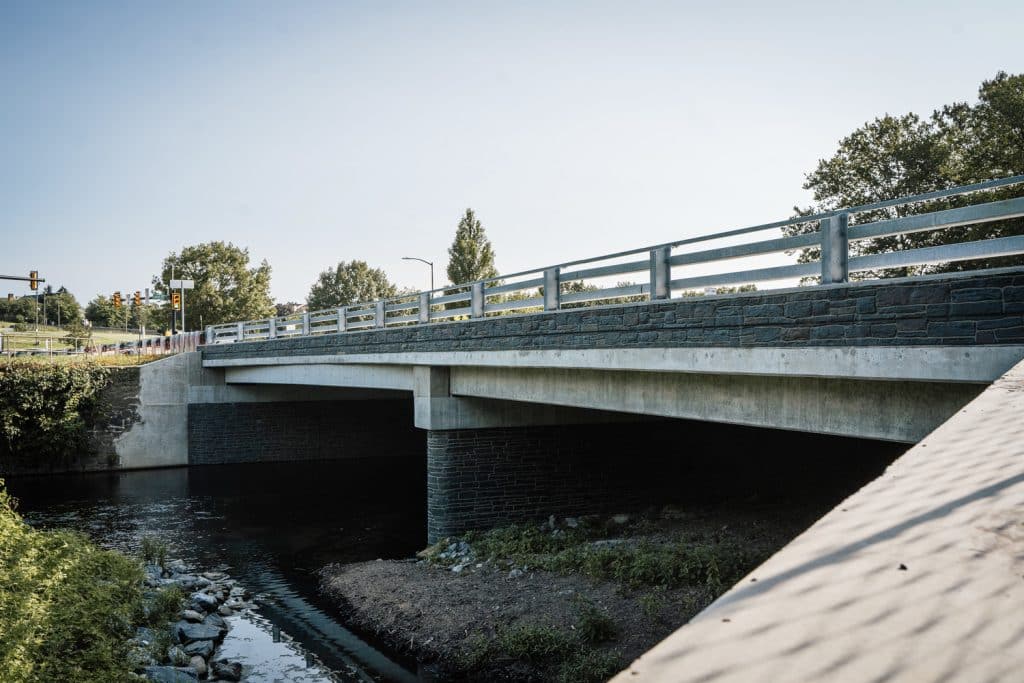
Unlike normal concrete, which can tolerate some water, the excavated area where the precast footings and panels were set had to be completely dry while we were injecting the grout. Creek water was diverted away from the site but because the footings had to sit on bedrock, we excavated eight feet below the stream bed where there was a ton of infiltration. In addition, most of Allentown drains to this area and any rain event flooded the site. It seemed like every time we were ready to grout, Mother Nature opened the floodgates to test the team’s patience. Our pumps and diversion systems couldn’t work fast or hard enough to hold back the tide and the field crew paid the price.
Hitting All the Angles
Most bridge decks are either straight or curved; this pour involved both, which made the angle of the curve different depending on which edge of the bridge was being measured. All of this made the pour a little more complicated for our Bidwell machine. Because the entire width of the bridge deck must be poured simultaneously, we needed to verify the Bidwell hit the angles perfectly, even when the measurements on each side differed. To ensure we poured the deck correctly, we set up measurement marks on either side to track our progress, adjusted as necessary, and keep the pour smooth and structurally sound.
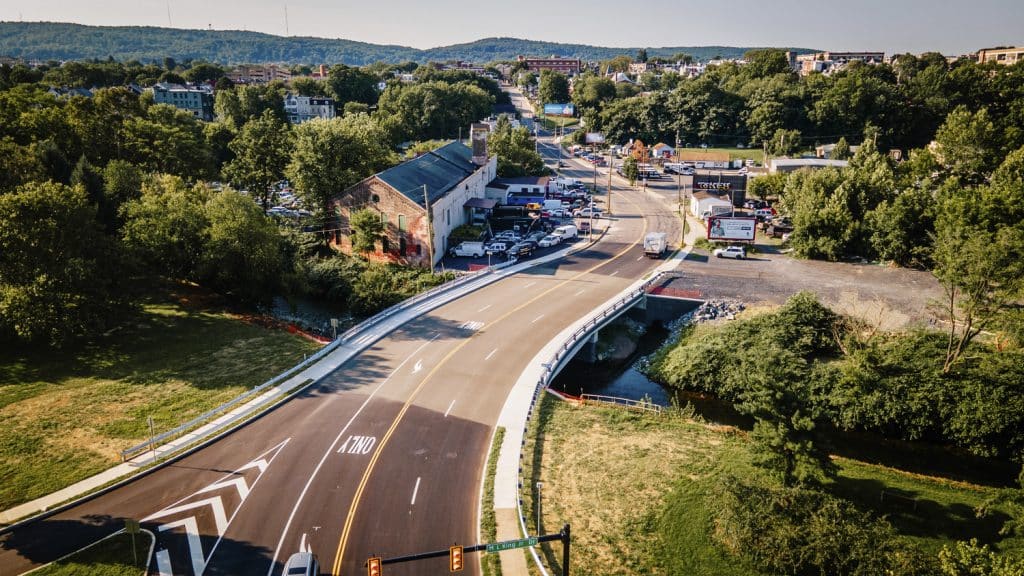
Despite all of the challenges – Mother Nature, the learning curve associated with the precast substructure, and the constant resequencing of our work – the project team persevered. Both PennDOT and the City of Allentown are very pleased with Kinsley Construction, our crews and the hard work and long hours we put in to meet their demands. In July, Allentown received a gorgeous new bridge that is safe and structurally sound. Great job to everyone that had a hand in this remarkable project!
Categories: Featured Stories, Completed Projects